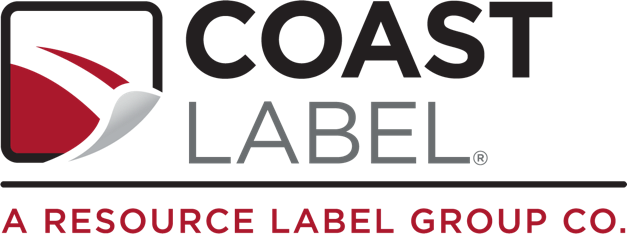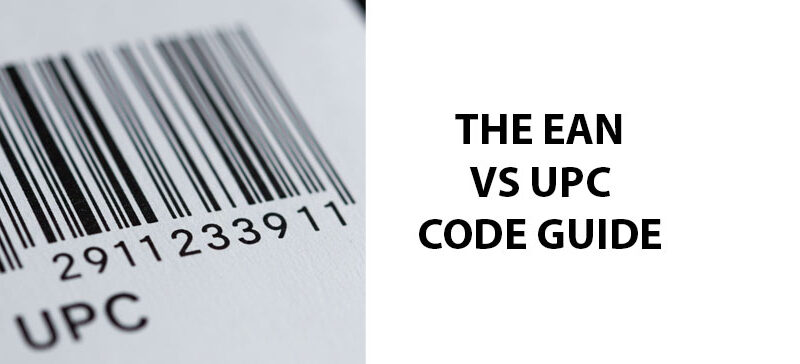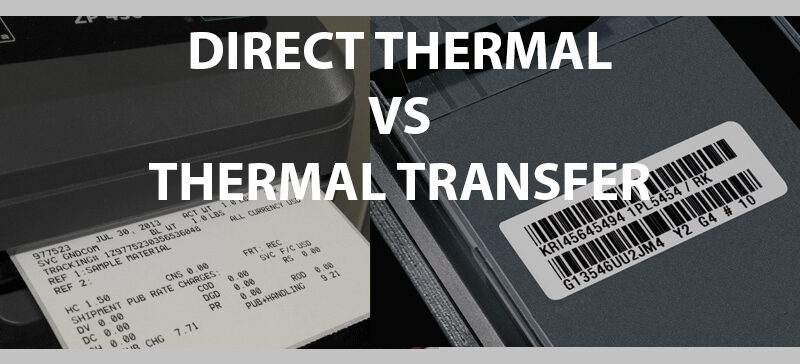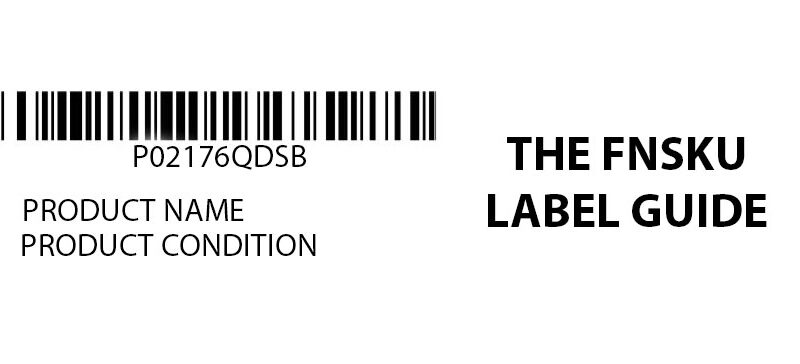Whether you sell your products in a brick and mortar store or mostly online, you rely on barcodes to help keep your business running. Both EAN numbers and UPC codes are commonly used for product identification, but what’s the difference between EAN vs UPC?
In this guide, we’ll walk you through EAN numbers, UPC codes, and how they differ to help you streamline your operations and avoid potential issues with inventory and sales tracking.
What Is an EAN Number?
An EAN number (short for European Article Number) is a 13-digit number used to identify a specific retail product. It’s part of the barcode system used globally to manage inventory, sales, and product data. EAN numbers are scanned at the point-of-sale or during inventory counts to access product information. Although the name has “European” in it, EANs are used worldwide in Europe, Asia, and beyond.
EAN numbers come in two main formats: EAN-13 and EAN-8. EAN-13 is used for most products, while EAN-8 is a shortened version that’s used on smaller products that don’t have enough room for a full 13-digit barcode.
What Is A UPC Code?
A UPC code (short for Universal Product code) is a 12-digit barcode that’s used to identify products in retail settings, just like the EAN. Although UPCs and EANs have similar format and function, UPC codes are mainly used in the US and Canada, though they are generally scannable everywhere.
EAN vs UPC Differences
When comparing the EAN code vs UPC code, the main difference is in their structure and regional use. UPC codes are 12-digit barcodes used mostly in the US and Canada. On the other hand, EAN numbers are usually 13-digit barcodes used internationally. The extra digit in an EAN code allows for more product variations and includes a country prefix to identify the product’s origins. Despite their differences, both codes serve the same purpose: to uniquely identify retail products for inventory and checkout systems.
How They Work
Both UPC codes and EAN numbers work by encoding product information into a barcode that can be read by a scanner. The lines and spaces of the barcode vary in width and spacing. Each combination corresponds to a digit (0-9). The number of bars and their arrangement is standardized so that scanners can quickly interpret them. When a cashier or warehouse worker scans the barcode, the scanner reads those numbers and pulls up the product details–like name, price, and inventory data–from a point-of-sale or inventory system.
The code itself doesn’t store the product details. Instead, it acts like a license plate. The number is linked to a database entry where all the actual information is stored. When a UPC code is scanned, the system updates inventory levels, records the sale, and applies the correct price automatically. EAN codes work the same way, just with one extra digit and a broader range for international use.
When and Where They’re Used
Both UPC codes and EAN numbers are used almost anywhere products are bought, sold, or tracked, including:
- At checkout in stores: To scan prices and update inventory.
- In warehouses: For stocking, picking, and tracking inventory.
- When listing products online: On Amazon, eBay, or Walmart.
- During shipping: To track and verify products in transit.
- In manufacturing: To identify parts and finished goods.
The main difference between EAN vs UPC is where they are used:
- EAN numbers are used internationally, especially in Europe, Asia, Australia, and South America. They’re required by many global retailers and platforms that operate outside the US.
- UPC codes are used mainly in the US and Canada. They’re standard for products sold in stores and online in these regions.
So, if you’re selling a product in your local store in the US, a UPC is likely all you need. But, if you’re expanding globally or listing your product on international platforms, having an EAN ensures it can be scanned everywhere.
When Not to Use Them
While both UPC codes and EAN numbers are very useful, there situations where you do not need to use them, including:
- Custom or handmade products: If you’re selling one-of-a-kind, handmade items, such as on Etsy or at a craft fair, barcodes aren’t usually required.
- Internal use only: If you’re creating barcodes just for internal inventory or organization, you can use custom or non-standard barcodes rather than UPCs or EANs.
- Digital products or services: If you’re selling digital products or services, you do not need to use barcodes. EAN numbers and UPC codes are only necessary for physical products.
- When using a GTIN exemption on Amazon: Amazon allows sellers to request a GTIN exemption if their products don’t have a manufacturer barcodes. This is common for private label or handmade sellers.
- Products sold abroad (UPC): If you are selling products internationally, you don’t need a UPC code. Instead, you should use EAN numbers for your products.
- Products sold only in North America (EAN): If you’re only selling in the US or Canada, you don’t need an EAN. Instead, use UPC codes for your products.
How to Get Them
Both EAN numbers and UPC codes are managed and assigned by GS1, a global barcode standards organization. Whether you need an EAN or UPC, you can purchase these codes through GS1.
To get your UPCs or EANs, go to gs1us.org and apply for a GS1 Company Prefix. You’ll choose how many codes you need and pay based on that number. Once approved, you’ll get access to your own set of UPC or EAN numbers. From there, you can assign each number to a specific product that you sell and generate barcodes for each.
Can They Be Used Internationally?
Yes, both UPC and EAN codes can be used internationally, but EAN is the global standard. UPC codes can work internationally as many international systems and read and accept UPC codes. In fact, UPCs can be converted into EAN by adding a leading zero. However, some non-US retailers or marketplaces might require a true EAN, not a converted UPC.
EAN vs UPC vs GTIN
Now that you understand the differences between EAN vs UPC, you might be wondering what GTIN has to do with these barcodes. EAN and UPC are specific barcode formats used to identify retail products, but they differ in format and regional use.
GTIN (Global Trade Item Number), on the other hand, is a broader term that encompasses various barcode formats, including UPC, EAN, and ISBN. The GTIN is essentially the global standard for identifying products in retail and e-commerce. It helps businesses ensure their products are identifiable across borders and systems.
EAN vs UPC Conclusion
The differences between EAN vs UPC are small but significant. EAN numbers are primarily used in international markets, while UPC codes are used mostly in the US and Canada. Both can help you streamline your checkout and inventory processes.
When it comes to UPC or EAN barcode labels, you want to make sure you’re printing in high quality so they can be scanned. You also want labels that will last through shipping, shelving, and beyond. That’s where Coast Label comes in. Using only the best materials, we’ll manufacture barcode labels that are meant to last. Contact us today for your custom barcode labels.



